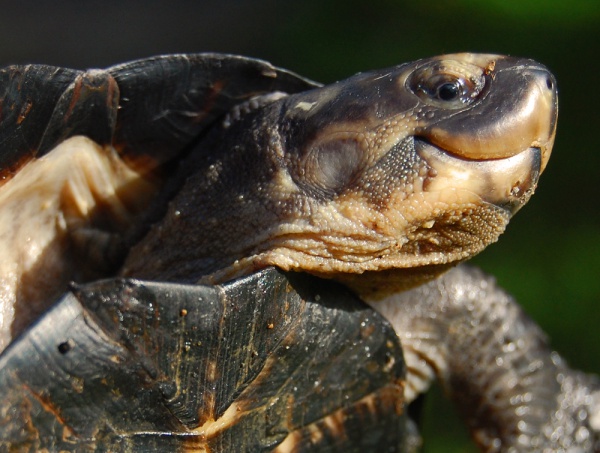Facts About Black marsh turtle
The Black Marsh Turtle, scientifically named Siebenrockiella crassicollis, is a freshwater turtle indigenous to Southeast Asia. These turtles range from small to medium in size, predominantly black with striking white or yellow markings on their heads. They thrive in slow-moving or still waters with dense vegetation, making them largely aquatic. Known for their popularity as pets, these turtles also hold a revered place in Southeast Asian Buddhist temples.
Regrettably, the Black Marsh Turtle is classified as Vulnerable by the IUCN due to extensive exploitation for the international wildlife trade, especially in Chinese markets. Originally categorized under the genus Emys, they are now classified as Siebenrockiella, a reclassification made by the naturalist John Edward Gray. They share a close relationship with the Philippine forest turtle and belong to the Geoemydinae subfamily. One of their distinctive features is the ability to retract their heads straight back into their shells, a trait that differentiates them from others. The name "crassicollis" aptly describes their thick necks.
These turtles are found in several Southeast Asian countries and are known by various local names. Physically, males can be identified by their concave plastrons, distinctive head markings, and thick necks. They exhibit sexual dimorphism and possess a diploid karyotype of 52 chromosomes. As nocturnal and shy creatures, Black Marsh Turtles are carnivorous, feeding on various aquatic organisms.
In terms of conservation, these turtles face significant threats from the wildlife trade, habitat loss, and mercury contamination. They are protected under several laws and conventions, including CITES and national regulations in their native countries. Conservation efforts include captive breeding programs aimed at both conservation and the pet trade. Despite these initiatives, the species remains vulnerable due to ongoing pressures from the international meat trade and traditional medicine practices.

 Timor Leste
Timor Leste